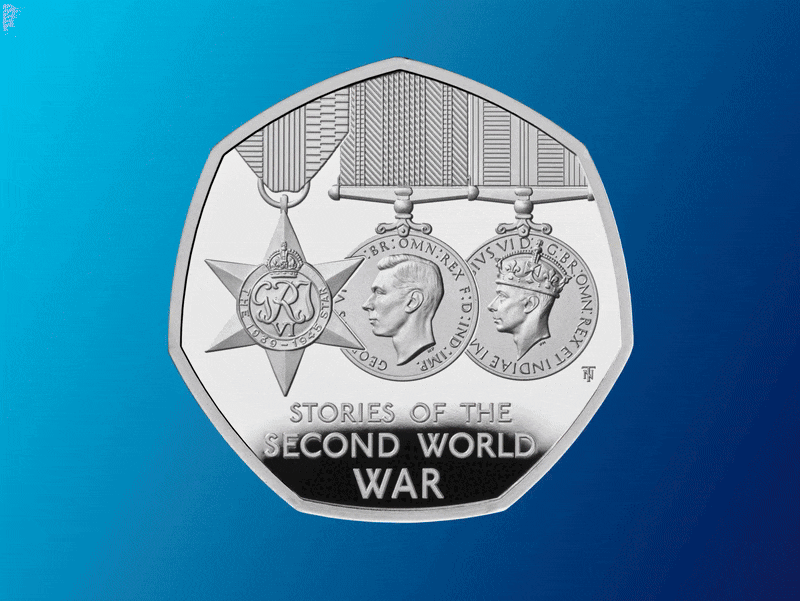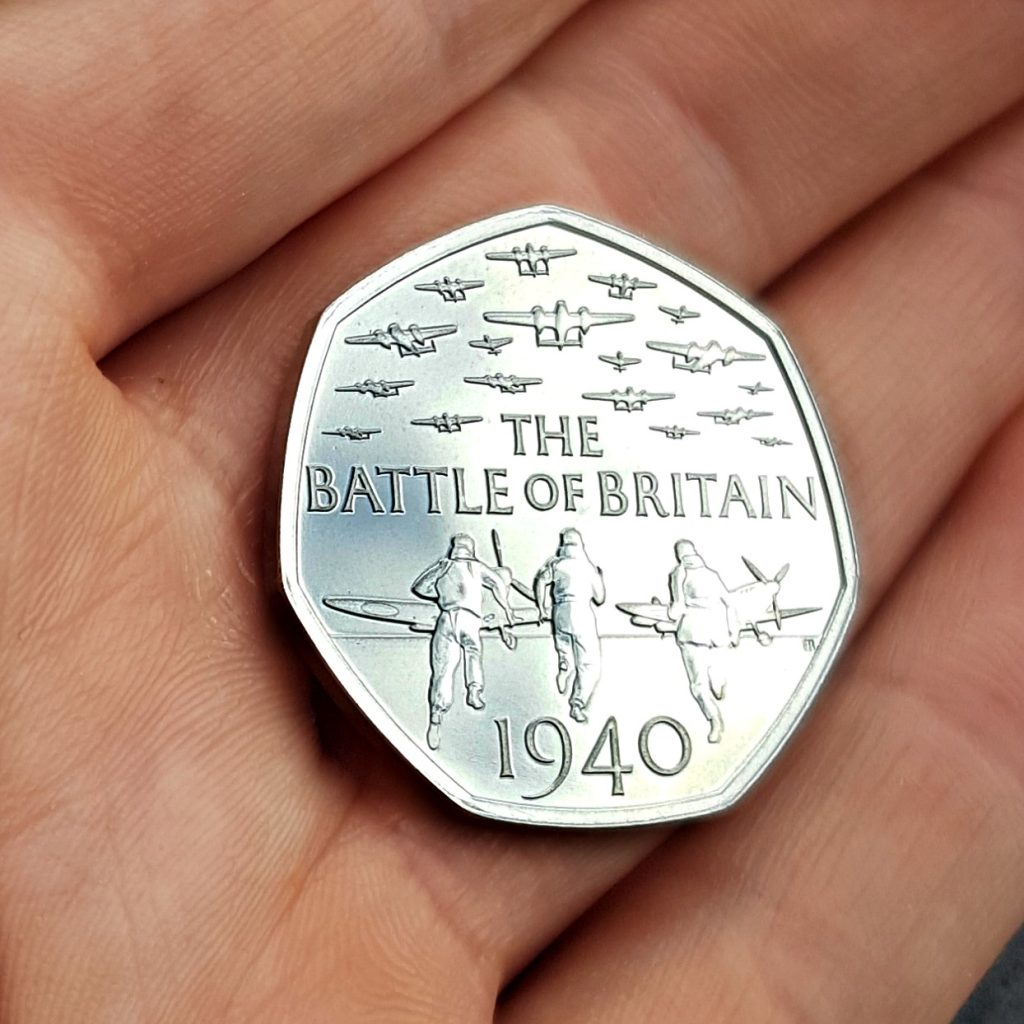Uncategorised
Fasten your seatbelts, the Harry Potter Flying Car 50p is taking off!
Change Checkers, prepare to embark on a magical journey with the latest 50p from the world of witchcraft and wizardry – the 2025 UK Harry Potter: The Flying Car 50p.
Secure the 2025 UK Harry Potter: The Flying Car 50p for your collection >>
A spellbinding design
This enchanting coin captures the adventure of the memorable scene from Harry Potter and the Chamber of Secrets, where Harry and Ron soar above the British countryside in a bewitched Ford Anglia, racing towards Hogwarts.
The reverse design, by Bella Biggs, brings to life the moment when Harry and Ron take flight in the magical car after missing the Hogwarts Express. The illustration is sure to summon the feeling of excitement you felt when first reading or watching the second instalment in the Harry Potter series, and true Harry Potter fans won’t want to miss seeing this coin in the flesh!
Which scene from the Harry Potter stories would you like to see featured on a UK coin? Let us know in the comments!
Continuing the magical journey
The 2025 Harry Potter: The Flying Car 50p isn’t the first time the beloved wizard has featured on a UK coin…
The release follows the 2024 Harry Potter: The Black Lake 50p, illustrating the tense underwater task during the Triwizard Tournament from Harry Potter and the Goblet of Fire.

Also issued in 2024 was the Harry Potter: The Winged Keys 50p, which depicted Harry’s skilful broomstick flying skills whilst chasing the enchanted flying key in Harry Potter and The Philosopher’s Stone.

Not to be forgotten of course is the 4-coin 50p series featuring recognisable characters or locations from the stories, issued in 2022 and 2023 to celebrate 25 years since the publication of Harry Potter and the Philosopher’s Stone. The very first coin featured Harry Potter himself, followed by the Hogwarts Express train, Professor Dumbledore and Hogwarts School.

These coins were extremely popular with collectors, so much so that they’re now all no longer available from The Royal Mint!
Don’t let this coin fly past you!
Given the popularity of previous Harry Potter themed coins, you should act quickly to secure this latest magical 50p for your collection.
Add the 2025 UK Harry Potter: The Flying Car 50p to your collection today >>
Could your Peter Rabbit 50p be worth £25,000!?
A 2017 Peter Rabbit 50p hit the headlines recently as it had been listed on eBay for a whopping £25,000! Why, I hear you ask? Well this particular coin had an interesting additional feature…

Image Credit: eBay
The 2017 Peter Rabbit 50p has a circulating mintage of 19,900,000, making it one of the more common 50p designs in circulation. Usually a coin with this mintage wouldn’t fetch more than a few pounds on the secondary market, however one eagle-eyed collector noticed something unusual about theirs, can you spot it?
Something strange is afoot
If you clocked the extra lump under Peter’s front foot, then well done, because you’ve spotted something many haven’t noticed before. One collector from Dereham picked up this feature on their 2017 Peter Rabbit 50p and headed to eBay to list the coin for over £25,000 due to the ‘error’.

The listing stated that ‘There is a lump of metal attached to the foot as seen in the photo.‘ and that the seller believed this to be an error as they hadn’t seen anything similar online before.
Not the only one
A quick look on eBay shows several other listings for 2017 Peter Rabbit 50ps for similar amounts that also seem to have the ‘lump’ on Peter’s foot, meaning it isn’t a one-off.

Image Credit: eBay

Image Credit: eBay
The lump is most likely due to a cracked die being used during the striking process, causing the metal to pool. Other listings for the coin featuring this ‘error’ show different size ‘lumps’ under the foot, probably having been struck at different stages of die deterioration.
2015 First World War Navy £2 with ‘flag error’
This isn’t the first time we’ve seen a cracked die cause an error on a circulating coin. The 2015 First World War Navy £2 made waves when collectors started to notice that some versions of the coin looked to have a flying flag atop the mast of the ship.

A number of people wondered whether there were two different designs of the Navy £2, however it was later confirmed that the extra ‘flag’ was caused by a cracked die during minting.

Image credit: @coinpatrol on YouTube
You can check out our Myths and Mis strikes blog for more information on common errors to look out for.
So how much is a 2017 Peter Rabbit 50p with the lump worth?
It’s not known exactly how many 2017 Peter Rabbit 50ps have this ‘error’, so we can’t be sure how rare it truly is, however if you do have one in your collection, it could be considerably more sought-after than the original version.
Despite sellers listing these coins on eBay for ludicrous amounts, it’s worth remembering that these aren’t sold listings, and so no sale has actually gone through. It’s important to check ‘Sold listings’ on auction sites rather than active listings, as the price a coin is listed for may not be the actual price it sells for.

It’s worth remembering that your coin is only worth what someone is willing to pay for it, and there are several factors that can affect this. To get a better idea of how much your coin may be worth, check out our 6 Point Guide to Valuing Your Coins.
Secure one for your collection
If you’re missing the 2017 Peter Rabbit 50p from your collection, you can secure it in circulation quality for just £3.50 POSTFREE >>
Who knows, yours might even have the ‘error’!
Three medals, two Kings, one incredible coin – The Stories of the Second World War 50p
The 2025 Stories of the Second World War 50p represents the impactful stories of those who lived through World War II, that will unfortunately soon fade from living memory. It also marks a historic first for British coinage, as it’s the first UK 50p to feature two different Kings – King George VI on the reverse and His Majesty King Charles III on the obverse!
Three Medals
The design on the Stories of the Second World War 50p was created by Timothy Noad with the assistance of Imperial War Museums, and depicts the medals awarded to millions who contributed to the cause. The medals featured include the 1939-45 Star, Defence Medal and War Medal, representing the countless unique experiences of the Second World War.

The 1939-45 Star (left) was awarded to personnel of the Navy, Army or RAF personnel who completed operational service overseas between 3 September 1939 and 8 May 1945 (2 Sept 1945 in Far East). The medal is a 6 pointed star with the crowned royal cipher of George VI on the obverse and the reverse is blank as with all World War II stars.

Image Credit: Auckland Museum, CC BY 4.0 via Wikimedia Commons
The Defence Medal (centre) was awarded to military and civilian subjects of the British Commonwealth during the Second World War and bears the uncrowned coinage effigy of George VI on the obverse. On the reverse of the medal was the Royal crown atop an oak tree, flanked by two heraldic lions.

Credit: Robert Prummel, CC BY-SA 3.0, via Wikimedia Commons
The War Medal (right) was the most common medal awarded to British and Commonwealth citizens who served in the Armed Forces or Merchant Navy during World War II. It features a crowned effigy of George VI on the obverse and a lion trampling on a monster with features of both an eagle and serpent on the reverse.

Credit: Acabashi, CC BY-SA 4.0 via Wikimedia Commons
Two Kings
Two of the three medals that features on the Stories of World War II 50p feature the effigy of King George VI, who was reigning monarch from 1936-1952 – the entirety of the Second World War. This, along with the portrait of King Charles III that features on the obverse of the coin, makes the first time ever that two different Kings have features on a UK 50p coin!
Two different Kings have previously featured on crowns, such as the 2023 King Charles I 1oz and the 2023 Charles II 1oz, however this is the first time in living memory – maybe even ever – that two different Kings have featured on the same 50p coins.


One incredible coin
The Second World War was a time when extraordinary courage and relentless effort came from all corners of the UK and the Commonwealth, forever shaping modern British society. From the battlefields to the home front, everyone played a role in the war effort—each story, a testament to resilience and unity.

These stories have been immortalised on the 2025 Stories of the Second World War 50p, preserving them for generations to come, and you can own a piece of history by securing it for your collection in Brilliant Uncirculated quality.
Our military history on UK coins
1994 D-Day 50p
The 1994 D-Day 50p was issued to mark the 50th anniversary of the Normandy Landings. This coin was originally issued in the larger 50p specification, meaning you’re no longer able to find it in your change. It was later re-issued in 2019 in the smaller 50p specification, however this version didn’t enter circulation.
Interestingly, the 1994 D-Day 50p was voted the all time favourite 50p coin by Change Checkers!

2024 D-Day 50p
30 years later in 2024, a new D-Day UK 50p was issued, this time marking the 80th anniversary of D-Day. The design was created by renowned sculptor David Lawrence in collaboration with Imperial War Museums and depicts brave Allied troops risking their lives on that fateful day.
This coin didn’t enter circulation, but when paired with the 1994 D-Day 50p, makes for a poignant reminder of the incredibly important day in history.

VC Medal and Heroic Acts 50ps
In 2006, two 50p coins were issued to mark 150 years of the Victoria Cross award – the highest and most prestigious decoration of the British decorations system. One of the coins features the Victoria Cross medal itself, a bronze cross pattée bearing the crown of Saint Edward surmounted by a lion, and the inscription “for valour”.
The other 50p represents the Heroic Acts carried out by those who received the award, with a soldier carrying a wounded comrade against a silhouette of the Victoria Cross medal.
The original 2006 issues of these coins entered circulation, however they were both re-issued in 2019 as part of the 50th Anniversary of the 50p Military History Collection.

Battle of Britain 50p
The Battle of Britain was an intense air battle fought mainly throughout the summer of 1940 between Germany and Britain. To commemorate 75 years since the great battle, The Royal Mint issued this 50p in 2015.
Designed by sculptor Gary Breeze, this coin quickly gained interest from collectors due to the three different obverses when it was initially minted. Find out more about that here >>
Like the VC 50ps, the Battle of Britain 50p was also re-issued in 2019 in the Military History 50p Collection.

Secure the Stories of the Second World War 50p
Add the 2025 UK Stories of the Second World War 50p to your collection >>







